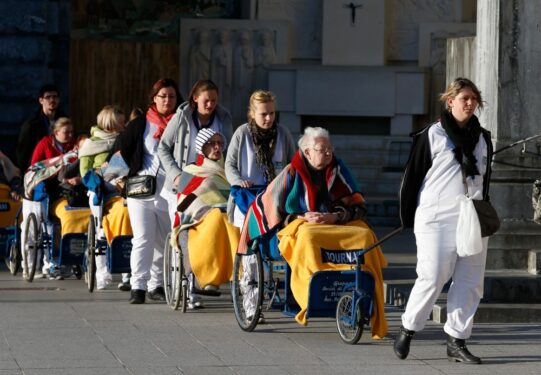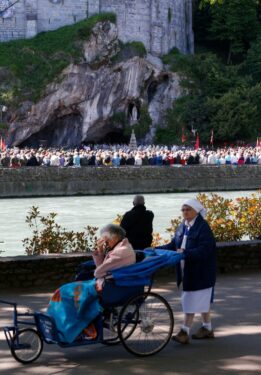
WASHINGTON — A Spanish woman who returned from a trip to the pilgrimage site in Lourdes, France on May 19 claims to have been cured of a severe visual impairment.
The claim was announced by the Hospitality of Our Lady of Lourdes of Madrid, an archdiocesan pilgrim service organization, and reported by Catholic News Agency May 21.
The group had just finished its 101st pilgrimage with 800 participants when the group’s adviser, Father Guillermo Cruz, sent a statement to the participating groups saying that one of the pilgrims who joined them “suffers from several diseases and had very severe visual impairment …[but] recovered her sight” after placing the shrine’s water on her face.
In the letter, he described the incident as an extraordinary event and said it “would be misleading people if we call it a miracle.” He also said the occurrence would “have to be studied before it can be qualified as a miracle.”
Lourdes, one of the most visited Marian shrines in the world, is the site where Mary appeared to St. Bernadette in a grotto in 1858 and instructed her to dig in the ground nearby, from which came a spring that many claim has healing properties.
Countless miracles have been attributed to the waters there but only 70 miracles have been officially recognized by the Catholic Church. The most recent one was in 2018.

Father Cruz said for a healing to be declared a miracle requires “a process of medical and spiritual discernment” and would need to be verified by the Church officials at Lourdes and then the bishop of Madrid would make a pronouncement.
The announcement of the pilgrim’s restored eyesight comes just days after the Vatican issued a document where it said it would be rare for the Vatican to approve of supernatural claims of divine apparitions or mystical visions.
The new norms, issued May 17, allow the Vatican to avoid making definitive judgments on the authenticity of these events and reaffirms that Catholics are not obliged to believe what has been reported to have taken place.
Instead, the diocesan bishop would be encouraged to evaluate what is said to have taken place and possibly highlight it by encouraging pilgrimages to a sacred site “without expressing any certainty about the supernatural authenticity of the phenomenon itself,” the guidelines said.
